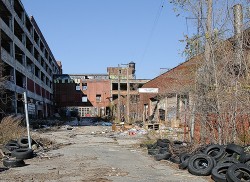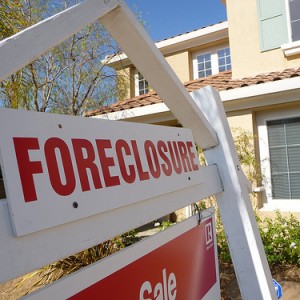 How in the world does the average American family survive in this economy? The median household income is a little bit less than $50,000 a year right now. So let’s call that about $4000 a month. But before any of that money gets spent, you have to take out at least $1000 in taxes. That leaves about $3000 a month to pay all the bills with. With that $3000 you have to pay the mortgage (or rent), make the car payments, make the student loan payments, pay for power and water, pay for health insurance, pay for home insurance, pay for car insurance, pay the phone bill, pay the Internet bill and pay the cable bill. On top of all that, every member of the family needs three meals a day and the cars need to be filled up with gasoline or they won’t go anywhere. Of course I haven’t even mentioned expenses that don’t happen every month such as car repairs or new shoes. No wonder so many families are feeling so financially stressed!
How in the world does the average American family survive in this economy? The median household income is a little bit less than $50,000 a year right now. So let’s call that about $4000 a month. But before any of that money gets spent, you have to take out at least $1000 in taxes. That leaves about $3000 a month to pay all the bills with. With that $3000 you have to pay the mortgage (or rent), make the car payments, make the student loan payments, pay for power and water, pay for health insurance, pay for home insurance, pay for car insurance, pay the phone bill, pay the Internet bill and pay the cable bill. On top of all that, every member of the family needs three meals a day and the cars need to be filled up with gasoline or they won’t go anywhere. Of course I haven’t even mentioned expenses that don’t happen every month such as car repairs or new shoes. No wonder so many families are feeling so financially stressed!
The truth is that American families are getting squeezed harder than they have been in ages. The number of good jobs is declining, incomes are going down, and the cost of living just keeps going up.
The following are 17 facts that prove that the average American family is getting absolutely pulverized by this economy….
#1 The cost of a health insurance policy for the average American family rose by a whopping 9 percent last year. According to a report put out by the Kaiser Family Foundation and the Health Research and Educational Trust, the average family health insurance policy now costs over $15,000 a year.
How in the world can most families afford that? Yes, in many cases employers are paying for at least a portion of that, but still that seems absolutely outrageous.
#2 Due to rising costs, a lot of employers are completely getting rid of health plans for their employees. In fact, the percentage of Americans covered by employer-based health plans has fallen for 11 years in a row.
#3 The number of uninsured Americans continues to rise. Things have gotten so bad that an all-time record 49.9 million Americans do not have any health insurance at all.
#4 At this point, most American families are tapped out financially. According to the U.S. Labor Department, incomes and spending were both down for the second straight year in 2010.
#5 At the same time, the employment picture continues to look worse with each passing month. According to the U.S. Bureau of Labor Statistics, the number of layoffs in the United States was up 14 percent in August.
#6 Even if you do have a job that doesn’t mean that you are doing much more than surviving. According to Paul Osterman, a professor of economics at MIT, approximately 20 percent of all employed Americans are making $10.65 an hour or less.
#7 The amount of debt that the average American family has piled up is absolutely staggering. The median yearly wage in the United States is just $26,261, but the average American household is carrying $75,600 in debt.
#8 Consumer confidence is extremely low right now. If the U.S. economy was in good shape, the Consumer Confidence Index would be up around 90. Instead, it is sitting at 45.4.
#9 Nearly every recent survey shows that the American people are feeling really depressed about the economy right now. In fact, one poll found that 80 percent of them believe that we are actually in a recession right now.
#10 Many consumers are seriously starting to cut back on spending again, and that is not a good sign for the U.S. economy. According to one recent study, 40 percent of all Americans have cut back on their spending within the last 60 days.
#11 It certainly does not help that millions of good jobs have been shipped out of the country. Sadly, the trend of offshoring our jobs is going to continue to accelerate if something is not done. According to Professor Alan Blinder of Princeton University, 40 million more U.S. jobs could be sent offshore over the next two decades.
#12 There is a lot of fear in the workforce right now. According to Gallup, 30 percent of all employed Americans are worried that they will be laid off soon.
#13 Today, there are 5.9 million Americans between the ages of 25 and 34 that are living with their parents. That is putting an even greater strain on the budgets of many families.
#14 American families have gotten very accustomed to using plastic to pay for things. Today, the average U.S. household has 13 different credit cards.
#15 Many American families are not making it at all in this economy. Last year, 2.6 million more Americans dropped into poverty. That was the largest increase that we have seen since the U.S. government began keeping statistics on this back in 1959.
#16 For many American families, living on food stamps has become a way of life. Today, there are more than 45 million Americans on food stamps and we keep setting a brand new record almost every single month.
#17 Things have gotten so bad that many American families are selling off whatever they can in order to survive. For example, down in Florida hundreds of people have been selling off their burial plots in an attempt to raise cash. The following is an excerpt from a local news report about this new trend….
Sellers are posting online, using burial plot brokers, and also funeral homes to market the real estate. Some of those advertisements show single plots starting at about $1,000, while family plots can go for up to $50,000.
Most American families are living in a state of almost constant financial stress. Way too many parents are spending way too many sleepless nights wondering how in the world they will be able to keep their heads above water for another month.
Very few families seem to have “extra money” for stuff these days. Yeah, there are the “privileged few”, but most people are really struggling to get by.
In America today, if you are able to keep your home from being foreclosed and you are able to put food on the table and clothes on the backs of your family then you are doing pretty good.
Sadly, as our current economic crisis deepens, the average American family is going to have an even more difficult time trying to survive financially.
So do you have any tips to share for how the average American family can survive in this very tough economy? Please feel free to share your ideas and thoughts below….





